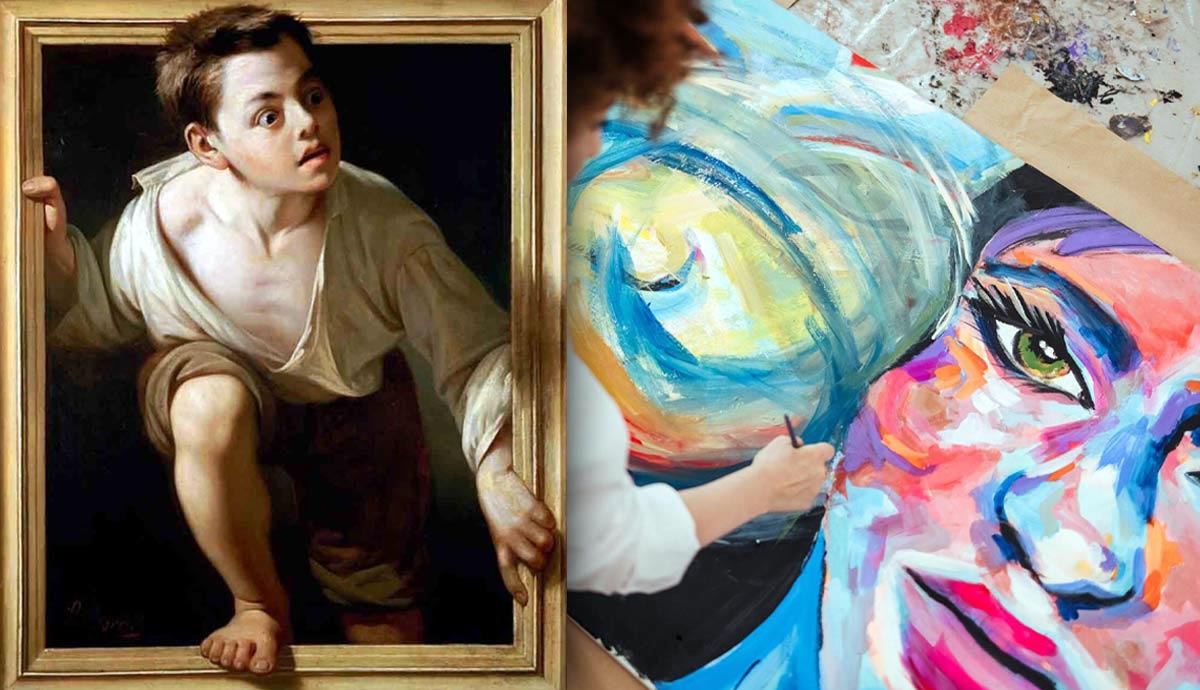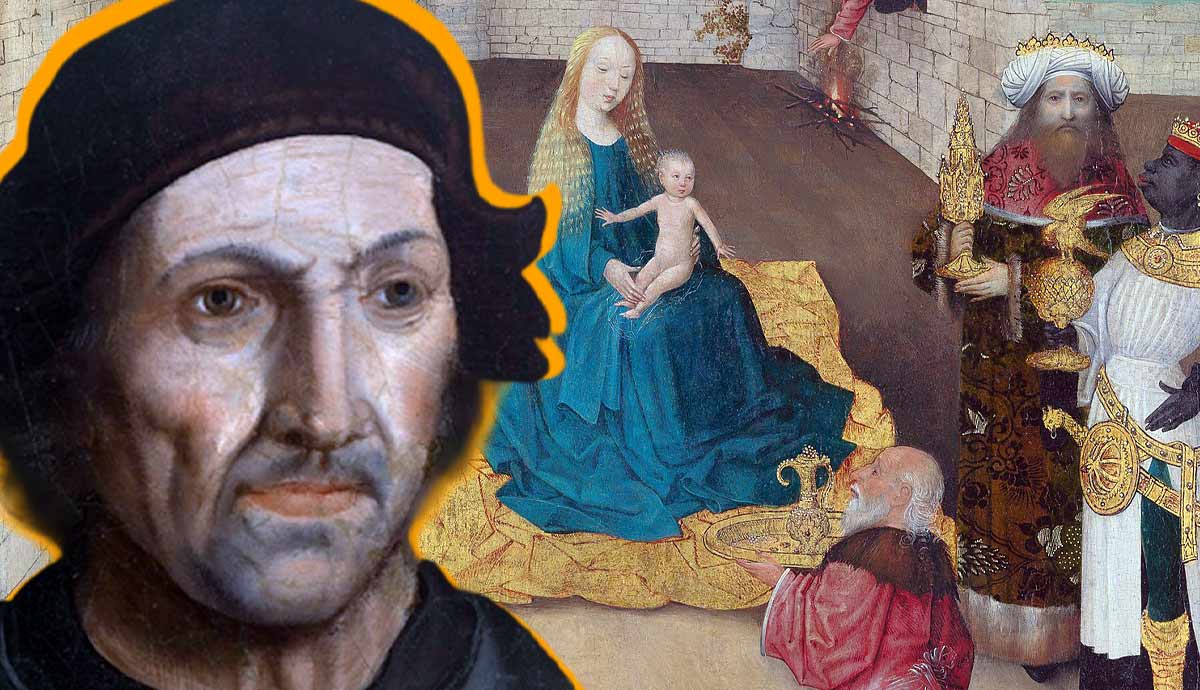
To some people art history can seem intimidating and complex, riddled with hundreds of specific terms and ideas. Understanding different art techniques can also be confusing but we are here to help. Each technique contributes to the overall impression of an artwork and helps the artist enrich its expressive potential. Read on to learn more about 10 popular art techniques and their purposes.
1. Impasto: The Art Technique of the Modernists

Impasto is one of the most famous and often-mentioned artistic techniques employed in order to create texture and volume on a flat canvas. The artist applies paint in thick strokes of a brush or a palette knife, leaving three-dimensional lumps behind. Due to its structure and consistency, oil paint is the most popular medium for impasto. Other paints like acrylic or tempera require additional viscosity-creating materials.
The technique of impasto has been known to artists since the earliest days of oil painting. In particular, Rembrandt van Rijn was known for his thick and textured layers of paint. However, the most famous instances of impasto belong to the artists of Modernity who used texture for additional emotional and sensory impact. In the Expressionist works of Gerhard Richter and Frank Auerbach, the impasto layers are so thick that flat paintings almost turn into three-dimensional sculptures, challenging traditional labels.
2. Collage

Familiar to almost every art lover, collage is a two-dimensional technique combining painting, printed media, and photographs on a single canvas. The technique gained particular importance in the early days of the twentieth century when it was legitimized as an art form. Collage was one of the signature art forms of the Cubists. Pablo Picasso and Georges Braque assembled their flat compositions from newspaper clippings, musical scores, drawings, paintings, and other elements. Later on, the technique of collage was employed by Dadaists and Surrealists, transforming further into the technique of photomontage. It is still used in contemporary art, although mostly in digital form.
3. Assemblage

Assemblage is the three-dimensional sibling of collage. Instead of pieces of paper, it combined numerous found objects of varying sizes and purposes. The final result of the assemblage often had nothing to do with the original functions of the elements involved.
Assemblage was a popular technique among the Surrealists. Particularly, the work Object (Breakfast in Fur) by the Swiss artist Meret Oppenheim combined a porcelain tea set with gazelle fur, effectively turning both substances useless for their primary functions. This juxtaposition allowed Oppenheim to explore the concept of concealed animal impulses of humankind. The piece was also interpreted as a critique of the attributes of conventional respectable femininity, with fur and tea sets read as symbols of the highest status.
4. Readymade / Found Object

The readymade or found object technique caused a great stir in the years of its initial presentation. Readymades challenged the concept of artistic creation and the required level of involvement from the artist’s side. Instead of painstakingly creating the work by perfecting their skills and techniques, readymade pioneers like Marcel Duchamp simply took the objects that already existed and reinvented their purposes and meanings. Thus, the simple act of choice became sufficient for artistic expression.
Even today, readymade remains one of the most controversial art techniques. However, it planted itself firmly into the history of art, and even directly provoked the emergence of a new art movement called Conceptualism. Conceptual art puts artistic ideas before the aesthetic qualities of an artwork, surpassing the limits of materiality.
5. Chiaroscuro

Chiaroscuro is an old technique that was commonly used during the Renaissance. The Italian term relates to the use of intensive contrasts between dark and light tones, resulting in a dramatic impression on the work’s audience. Chiaroscuro was particularly important for Baroque art. It was valued for the intense emotion it helped create since Baroque was a dramatic and empathy-inducing art movement.
The religious art created by Baroque masters evoked feelings of devotion and compassion and had the ultimate function of forming emotional attachments to Biblical characters and the Church. Among the greatest masters of chiaroscuro was the famous and controversial Caravaggio, recognizable by his intense dark backgrounds and striking highlights that created the illusion of light coming out of the painting itself.
6. Divisionism

Divisionism is an art technique that relies on a simple optical illusion. Instead of mixing paint colors before applying them on canvas, Divisionist artists worked with simple unmixed tones and applied them close to each other in small strokes. Due to the nuances of human eye perception, the viewers saw the whole composition, where simple colors combined into more complex and nuanced ones. Just like Impressionism, Divisionism was a product of its century’s explorations of optics, light, and human perception. However, many contemporaries accused Divisionists of lacking soulfulness in their works, with illusions taking away the spiritual and aesthetic components of art. Indeed, despite the variety of themes and subject matters, the majority of Divisionist paintings essentially look the same, with identical shapes and color palettes.
7. Encaustic Painting

A rare and unusual technique today, the encaustic painting was widely used in the art of Antiquity. Instead of paint, the artists used a mixture of beeswax and pigments, heated and applied with metal instruments. In the contemporary world, artists sometimes use chemical substances instead of beeswax.
Almost any surface can be used as a base for encaustic painting, including stone, marble, and wood. However, the technique requires speed and precision, since the wax paint hardens within seconds. Encaustic painting perfectly preserves the intensity of color. It was widely used in early Christian art and in funerary portraits of Roman Egyptian elites during the 2nd century CE. These paintings, known as Fayum mummy portraits, demonstrated incredible precision and life-likeness.
8. Fresco

Fresco was one of the most popular artistic techniques, known from the early years of Antiquity. It was mostly used for interior painting and decoration. Artists applied pigments, dissolved in water, directly to the layer of wet lime plaster, creating a vivid image that could not be removed from walls. Frescos fade over time but still preserve rather well. The Roman city of Pompeii, destroyed by the volcano eruption in 79 BCE, still retains its frescos despite thousands of years, tons of ash, and millions of tourists visiting every year.
Fresco as an art technique was immensely popular in many parts of the world. However, the nuances of local climates sometimes prevented these works of art from lasting long enough. Venice is a city valued for its art heritage, incredible in quality and quantity, which includes hundreds of painted frescos. Still, the abundance of water and weather disasters including floods, pose a serious threat to the Venetian frescos. Over the years, Italian art restorers learned to remove the painted surfaces from walls to apply protective layers underneath them.
9. Lost Wax Sculpture

The lost wax technique is a method of creating hollow sculptures from any molten material using wax models. First, the artist creates a wax prototype for the future sculpture and then makes a mold of it. The inner part of the mold is covered with a layer of melted wax, with its thickness regulated according to the desired thickness of the final work. The result is a hollow wax model, that is then covered with heat-resisting substances like plaster or ceramics both on the surface and inside. When heated, the wax pours away from the ceramic shell, leaving the artist with a perfect mold of the original sculpture, then to be filled with molten bronze. Although the technique sounds complex in theory, in reality, it’s one of the easiest and most precise ways of creating the exact bronze copy of any object.
10. Trompe L’oeil: The Art Technique That Deceives the Eye

Trompe l’oeil is an old painting technique that was popular among the Greek and Roman elites of Antiquity. The term is translated from French as deceiving the eye. It offers a visual illusion of depth and volume on a flat painting surface. Over centuries, trompe l’oeil has been used to create fake galleries on mansion walls, as well as fake sculptures and human figures, and even realistically-looking food on tables. Trompe l’oeil has always been treated as a curiosity rather than a serious artistic method. For that reason, European elites commissioned such paintings to entertain their guests and boast about their wealth and eccentricity.










